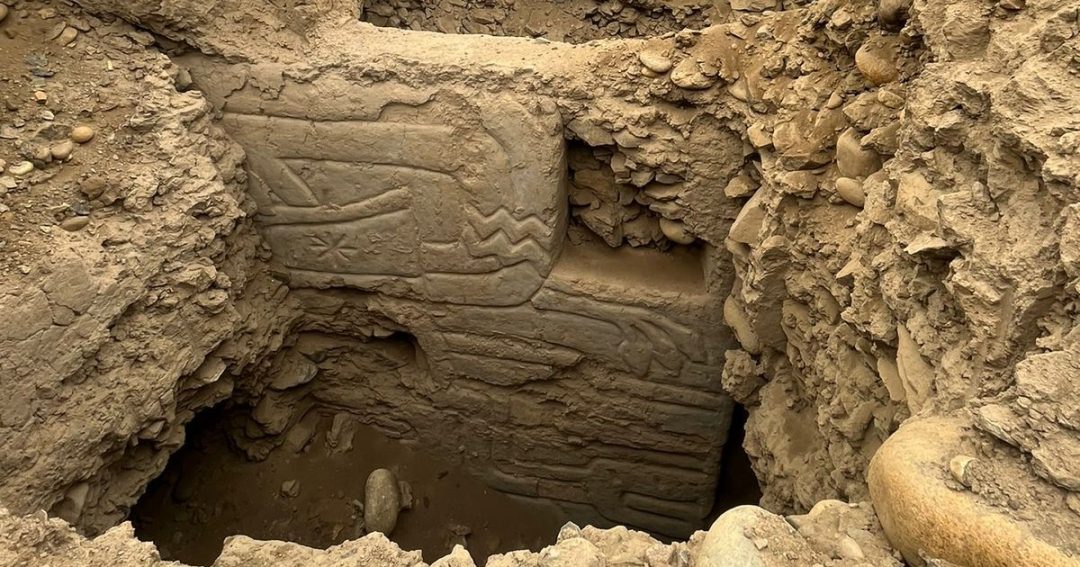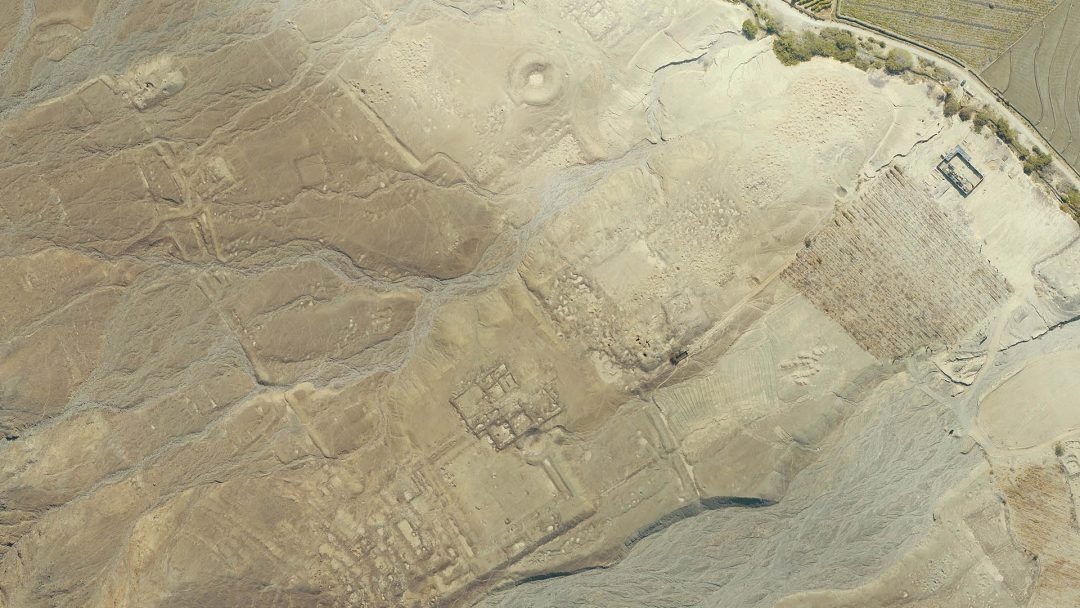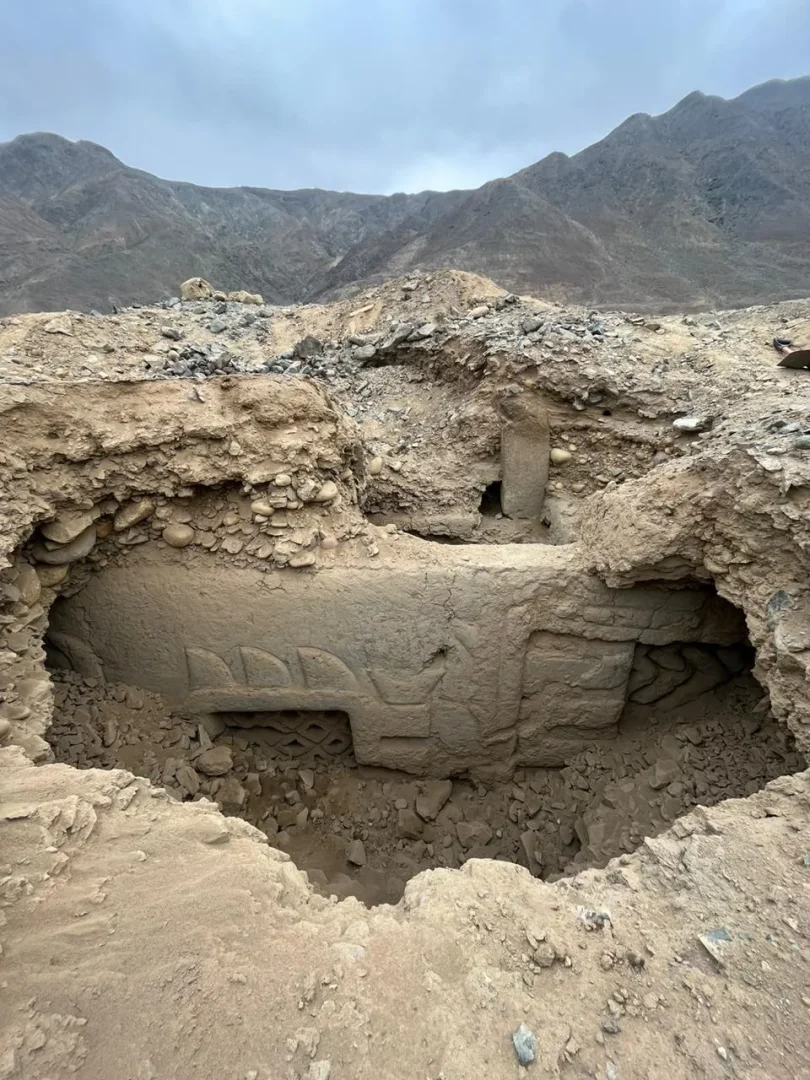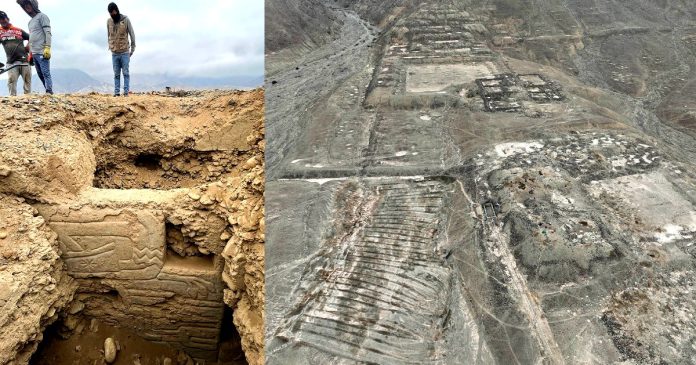Huaca Yolanda, a breathtaking archaeological discovery in Peru’s Chao Valley, has earned the title “Gobekli Tepe of the Americas” for its ancient, buried splendor. In July 2025, archaeologists uncovered a vibrant mural that rewrites the story of early Andean civilizations. This 4,000-year-old site, tucked in La Libertad’s dusty hills, echoes Turkey’s Gobekli Tepe in its ritualistic grandeur and mysterious burial. It’s a window into a world where fish, stars, and nets danced in sacred art, hinting at a culture obsessed with sea and sky.
Picture this: a 20-foot-long, nearly 10-foot-high mural, bursting with blue, yellow, red, and black, carved in 3D relief on adobe bricks. It’s unlike anything seen in northern Peru. Ana Cecilia Mauricio, leading the dig for Pontifical Catholic University of Peru, calls it a game-changer. The site’s plazas and buried temple atrium scream ceremony, much like Caral-Supe, an older Peruvian marvel. But Huaca Yolanda’s fresh find demands the spotlight. It’s a time capsule, sealed by ancient hands and desert sands, now threatened by looters and bulldozers.
A Mural That Speaks of the Cosmos

The mural steals the show at Huaca Yolanda. Artists shaped adobe into fish, stars, plants, and fishing nets, painting them in vivid hues. These images, etched around 2000–1000 BCE, suggest a people tied to the Pacific’s bounty and the night sky’s mysteries. Was this a shrine to fertility? A star map for rituals? Maybe a nod to medicinal plants? The motifs feel alive, telling ancient stories of coastal life.
This artwork, found in a buried temple atrium, stands out for its craftsmanship. Builders carved both sides of the wall, a rare feat. The three-dimensional designs give the mural a dynamic almost modern look. It’s not just art; it’s a cultural code, hinting at beliefs that predate Chavín’s jaguar-heavy iconography by centuries. Huaca Yolanda’s creators were no amateurs; they planned, sculpted, and painted with purpose, leaving a legacy hidden for millennia.
Echoes of Gobekli Tepe’s Ancient Magic

Huaca Yolanda invites comparisons to Gobekli Tepe, Turkey’s 11,000-year-old enigma. Both sites were buried deliberately, a ritual act that preserved their treasures. At Gobekli Tepe, the people hauled 10-ton limestone pillars, carving them with snakes, foxes, and vultures. They built circular enclosures, eventually they covered them with earth. Huaca Yolanda’s builders did something similar, burying their mural and plazas under sediment, perhaps to honor or retire them.
Both sites pulse with cosmic energy. Gobekli Tepe’s carvings hint at death rites and starry alignments. Huaca Yolanda’s fish and stars suggest sea-sky connections. They challenge old ideas: Gobekli Tepe proves foragers-built monuments before farms; Huaca Yolanda shows coastal Andeans crafted complex art before empires. These parallels, across oceans and millennia, make Huaca Yolanda a “Gobekli Tepe of the Americas” in spirit, if not in age.
A Site Under Siege

Huaca Yolanda’s story isn’t all wonder; it’s a race against time. Looters, or huaqueros, plunder the site, snatching artifacts for profit. Farmers’ bulldozers churn through ancient layers, erasing history. Urban sprawl creeps closer, threatening what’s left. The mural’s discovery in 2025 sparked urgency. Mauricio’s team pushes for fencing, guards, and local education to save this gem. Without action, the Gobekli Tepe of the Americas could vanish before we fully know it.
Image Credit: Ana Cecilia Mauricio
The site’s arid setting helped preserve it, much like Gobekli Tepe’s dry hills. River silt and wind-blown sand buried Huaca Yolanda’s plazas and temple over centuries. But modern threats undo that protection. Community programs could turn locals into stewards, teaching them the site’s value. Funding and global attention, like Caral-Supe’s UNESCO boost, are critical. Every shovel of dirt saved keeps this ancient voice alive.
Rituals and Longevity: A Timeless Legacy
Huaca Yolanda thrived for centuries, from 2000 to 1000 BCE. Its plazas, both circular and rectangular, hosted gatherings, much like Gobekli Tepe’s enclosures. Builders layered new structures over old, showing a culture that evolved but held fast to ritual. The buried atrium suggests they sealed sacred spaces, a practice echoing Gobekli Tepe’s backfilled pillars.
The site’s longevity mirrors Caral-Supe’s 1,200-year run and Gobekli Tepe’s 1,500 years. These places weren’t fleeting; they were anchors. Huaca Yolanda likely drew coastal and inland groups, uniting them through ceremonies. Its marine motifs hint at fishing communities, maybe shamans, weaving stories of sea and stars. The Gobekli Tepe of the Americas tag fits because it captures this enduring, spiritual pull.
Why Huaca Yolanda Matters
This discovery flips history on its head. Huaca Yolanda, like Gobekli Tepe, shows humans built complex, meaningful spaces without cities or kings. Its mural, a masterpiece of early art, proves coastal Andeans were innovators, not followers. The site bridges Caral-Supe’s urban roots to later cultures like Chavín, hinting at a creative explosion in Peru’s deserts.
The Gobekli Tepe of the Americas label isn’t just hype; it’s a call to rethink human ingenuity. Both sites, buried by their makers, speak to a universal urge to create, worship, and preserve. Huaca Yolanda’s fish and stars connect us to ancestors who saw the world as sacred. Ongoing digs promise more finds, but only if we protect it. This isn’t just Peru’s story, it’s humanity’s.
A Call to Action
“We need the Ministry of Culture, and the regional and municipal authorities to act urgently to protect this heritage.”
Dr. Ana Cecilia Mauricio
Huaca Yolanda needs us now. Its mural, plazas, and untold artifacts face destruction. Like Gobekli Tepe, it’s a fragile link to our past. Support for excavations, local advocacy, and global awareness can save it. Imagine losing the Gobekli Tepe of the Americas before its full story unfolds. Let’s rally for its survival, ensuring this ancient masterpiece inspires for generations.
If you like this story check out Pututus: Ancient Horns of Chavín’s Ritual Music

